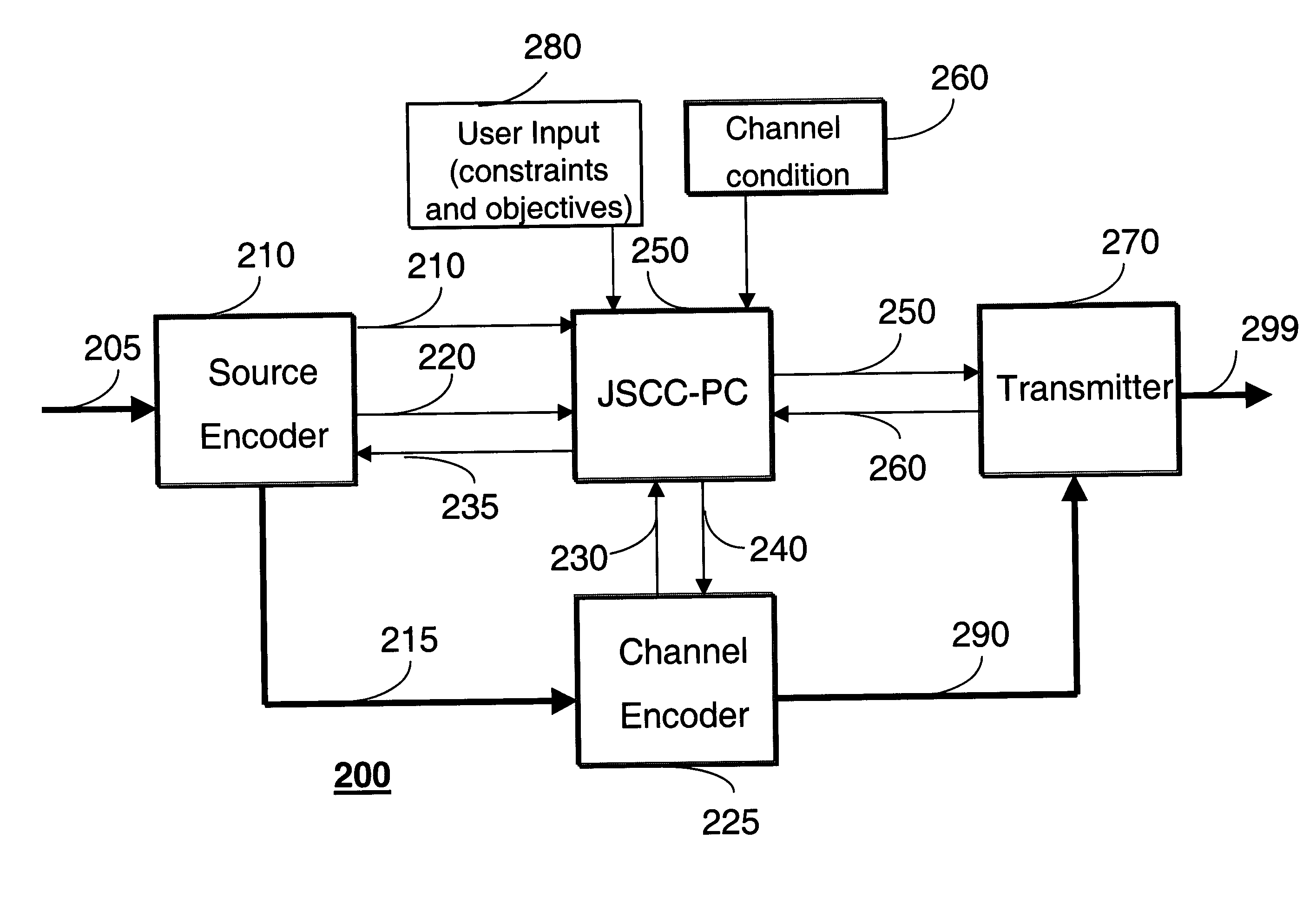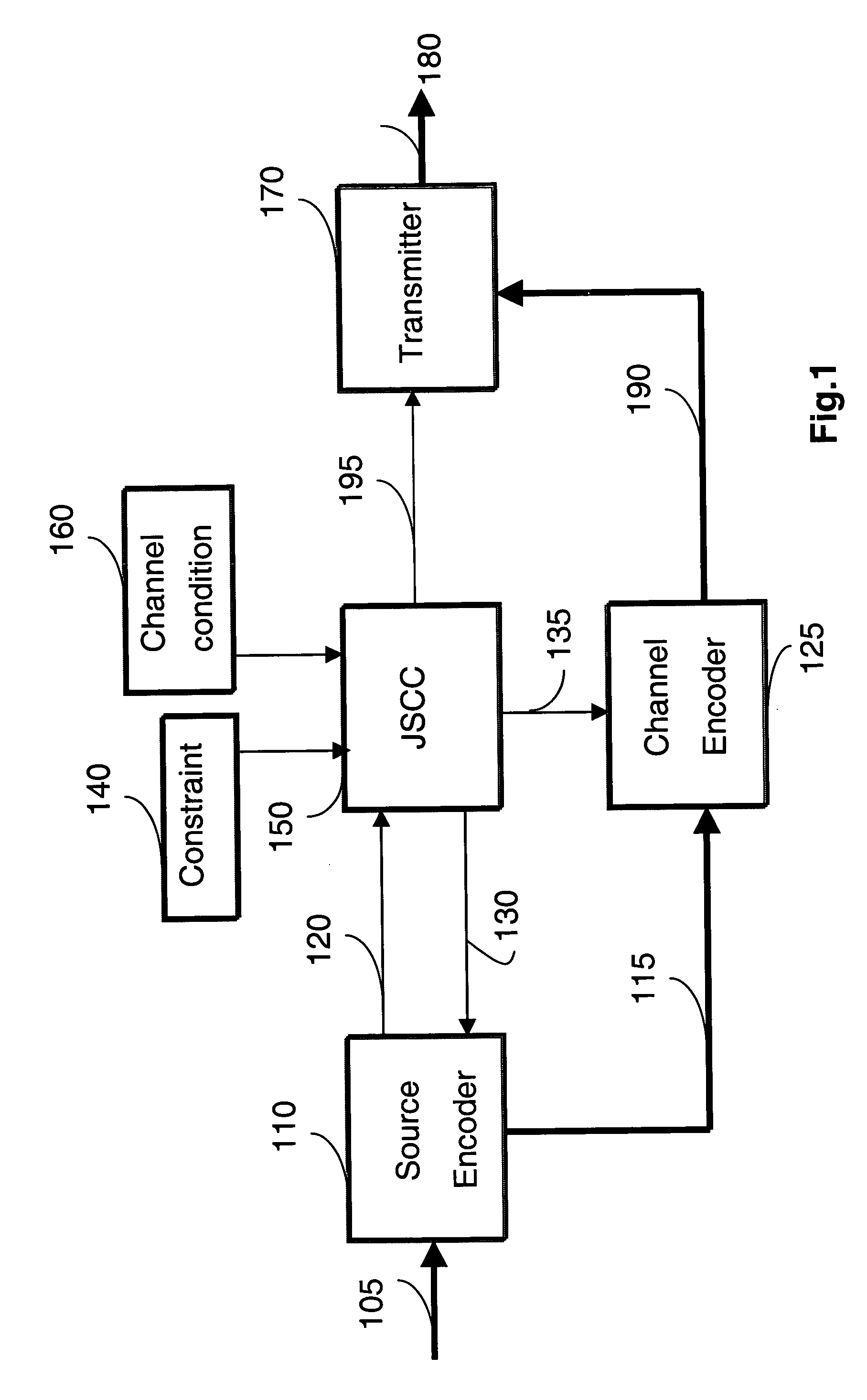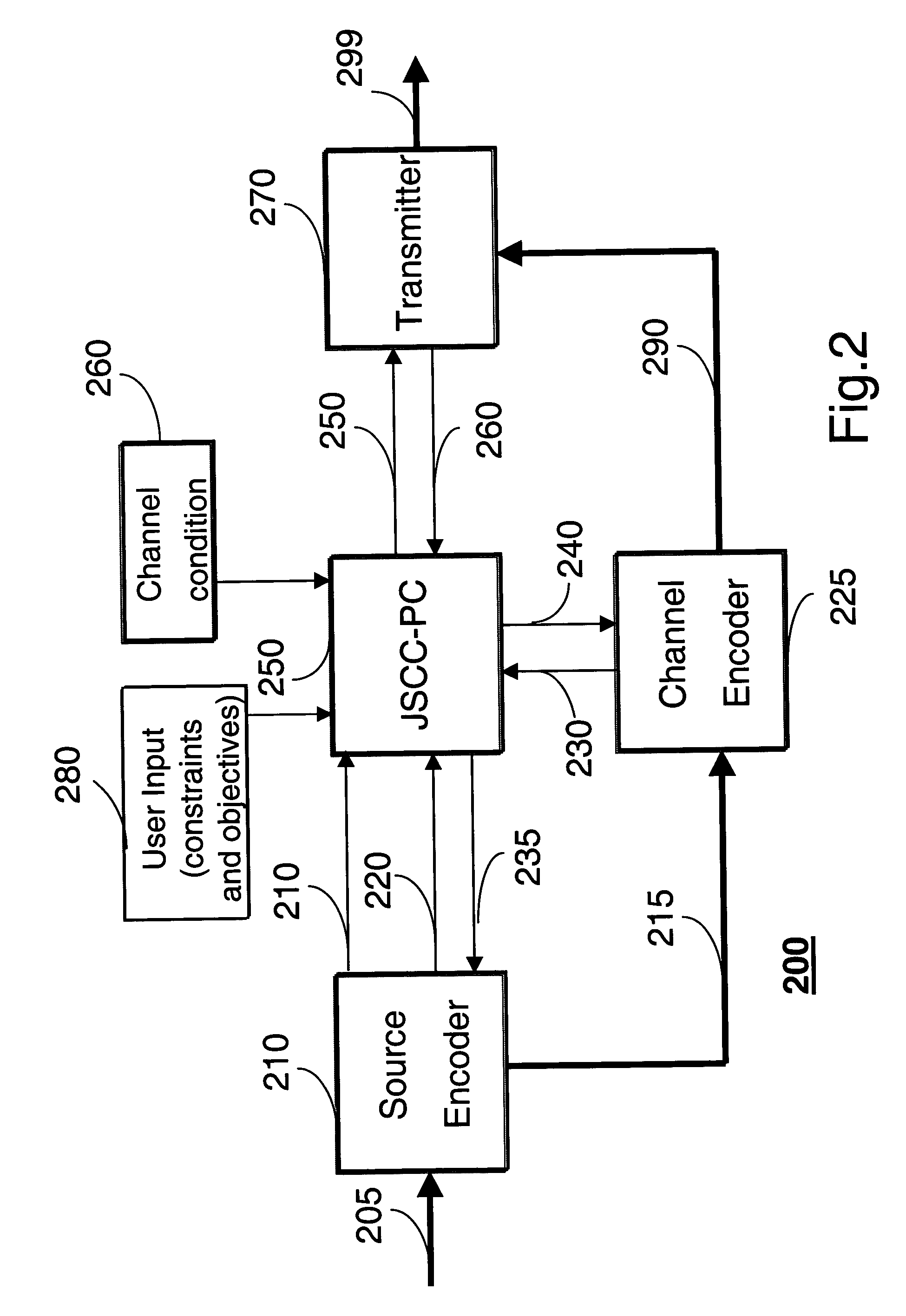Method and system for content aware and energy efficient transmission of videos and images
a content aware and energy-efficient technology, applied in the field of multimedia data energy-efficient transmission, can solve the problems of low bandwidth of wireless communication channels, high bit error rate (ber), and high bit error rate of wireless communications channels,
- Summary
- Abstract
- Description
- Claims
- Application Information
AI Technical Summary
Benefits of technology
Problems solved by technology
Method used
Image
Examples
Embodiment Construction
In a wireless communications network, transmission power is a major component of total energy consumption. Moreover, the energy consumption is proportional to the number of bits transmitted. Therefore, our invention minimizes energy consumption while meeting a predetermined quality of service (QoS) constraint for transmitting multimedia, e.g., still images, videos, voice, text, and data.
Our method selects an error resilient source encoder and a channel encoder according to dynamically varying channel conditions and signal to noise ratio (SNR) under a given rate-distortion constraint of the multimedia. The selected procedures and a selected transmit power level minimize total energy consumption for delivery of the multimedia from a transmitter to a receiver. The total energy consumption is defined as the energy consumption due to processing and transmitting the multimedia.
As shown in FIG. 2, we use an efficient joint source channel coding-power control (JSCC-PC) method and syste...
PUM
 Login to View More
Login to View More Abstract
Description
Claims
Application Information
 Login to View More
Login to View More - R&D
- Intellectual Property
- Life Sciences
- Materials
- Tech Scout
- Unparalleled Data Quality
- Higher Quality Content
- 60% Fewer Hallucinations
Browse by: Latest US Patents, China's latest patents, Technical Efficacy Thesaurus, Application Domain, Technology Topic, Popular Technical Reports.
© 2025 PatSnap. All rights reserved.Legal|Privacy policy|Modern Slavery Act Transparency Statement|Sitemap|About US| Contact US: help@patsnap.com



